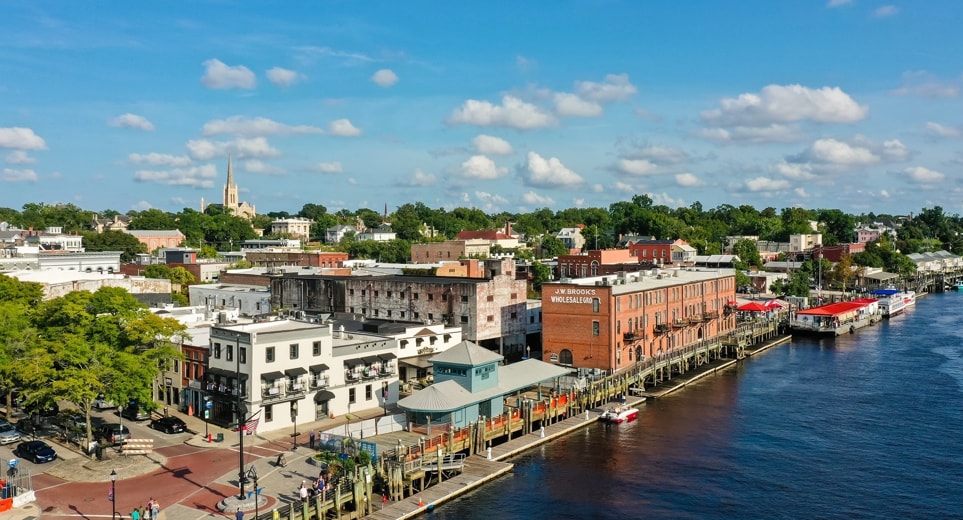
Transforming Properties in Dartford Wilmington: A Change of Use Perspective
Changing the purpose of a property in Dartford Wilmington can open a world of possibilities for business owners, homeowners, and investors. The area’s dynamic growth and evolving zoning laws make property transformation an appealing option. Whether converting a commercial space into residential units or transforming industrial buildings into offices, understanding the process and regulations is crucial to ensure a smooth transition.
Key Takeaways
- Change of use in Dartford Wilmington requires planning permission for most property transformations.
- Property adaptation can increase value, meet market demand, and revitalize neighborhoods.
- Engaging professionals and consulting local planning policies improves approval chances.
- Common transformations include residential to commercial, commercial to residential, and industrial conversions.
- Anticipating costs, compliance requirements, and community impact is crucial for smooth implementation.
Why Change of Use Matters in Dartford Wilmington
Dartford Wilmington has experienced significant development over recent years. Local authorities actively manage land use to balance residential, commercial, and industrial growth. A property change of use involves modifying the primary function of a building, often requiring planning permission from the local council. For example, turning a warehouse into a retail outlet or converting offices into apartments demands compliance with planning regulations, safety standards, and building codes.
Changing a property’s use can significantly increase its value. Investors often find that properties with flexible potential attract higher demand. For local businesses, it offers a chance to operate in a location previously unsuitable for their activity, aligning property function with business strategy.
Steps to Secure a Change of Use
Securing approval for a change of use in Dartford Wilmington requires a clear plan and attention to detail. Here are the steps property owners typically follow:
-
Identify the Current and Proposed Use
Each property falls under a specific use class defined by local planning authorities. Identifying both the existing and desired use helps determine if planning permission is required. For example, converting a shop into a café falls under different regulations compared to turning a house into offices. -
Consult Local Planning Policies
Dartford Wilmington council provides guidance on land use policies. Reviewing these documents ensures your proposal aligns with zoning requirements and environmental considerations. -
Prepare a Planning Application
A successful application includes site plans, proposed layouts, and any required environmental assessments. Seeking professional guidance from experts like Studio 20 Architects can improve the likelihood of approval and streamline the process. -
Submit and Await Decision
Once submitted, the council assesses the application against local policies, neighborhood impact, and legal requirements. Some applications may require a public consultation phase to gather community feedback. -
Implement Changes
After approval, owners can modify the property according to the new use. Compliance with building codes, health and safety regulations, and accessibility standards is essential during this stage.
Benefits of Property Transformation in Dartford Wilmington
Changing the use of a property comes with multiple advantages:
- Increased Property Value: A property that meets market demand often commands a higher price or rental rate.
- Business Flexibility: Entrepreneurs can adapt spaces to suit new operations without relocating.
- Enhanced Community Utility: Transforming underutilized spaces can revitalize neighborhoods and meet local needs.
- Efficient Land Use: Converting properties reduces the need for new construction, preserving green spaces.
For instance, converting an old industrial site into residential apartments not only generates revenue but also addresses housing demands in Dartford Wilmington. Similarly, repurposing empty shops into co-working hubs supports the local economy and attracts professionals to the area.
Common Change of Use Scenarios
Several change of use scenarios frequently occur in Dartford Wilmington:
-
Residential to Commercial
Homeowners sometimes convert large residential properties into offices, clinics, or boutique shops. This approach suits areas where commercial demand outpaces residential interest. -
Commercial to Residential
Many vacant retail spaces transform into apartments or townhouses. This shift meets the increasing demand for housing in the area while revitalizing underused buildings. -
Industrial to Commercial or Residential
Old factories or warehouses often find new life as offices, gyms, or modern loft apartments. Such conversions combine historical architecture with modern utility. -
Leisure and Hospitality Adaptations
Pubs, restaurants, or clubs may change their purpose to retail outlets or event spaces, depending on market trends and community needs.
Planning Permission Tips
To enhance approval chances for a change of use, consider these tips:
- Engage Professionals Early: Architects, surveyors, and planners can identify potential issues before submission.
- Provide Accurate Documentation: Incomplete or unclear applications can delay decisions.
- Check Permitted Development Rights: Some minor changes may not require full planning permission.
- Anticipate Community Impact: Address concerns such as parking, noise, and traffic in your application.
Following these steps reduces delays and ensures compliance with council requirements, keeping projects on schedule and budget.
Challenges in Property Change of Use
While the benefits are compelling, several challenges may arise:
- Planning Restrictions: Some areas have strict zoning rules limiting certain changes.
- Cost of Renovation: Adapting a building for a new purpose can involve significant construction and compliance costs.
- Legal and Safety Compliance: Ensuring the property meets fire safety, accessibility, and health regulations is non-negotiable.
- Community Objections: Local residents may raise objections that can delay or block approval.
Awareness of these challenges helps owners prepare realistic timelines and budgets.
Local Authority Role in Dartford Wilmington
The Dartford Wilmington council plays a central role in change of use projects. They assess applications, enforce compliance, and provide guidance on land use policies. Engaging with the council early in the process can prevent costly mistakes. Council officers also offer pre-application advice, helping applicants identify potential issues and adjust proposals accordingly.
Maximizing Return on Investment
For investors and business owners, changing a property’s use can generate significant returns if done strategically:
- Target High-Demand Sectors: Focus on sectors experiencing growth in Dartford Wilmington, such as residential housing or flexible office spaces.
- Optimize Space Utilization: Redesign layouts to maximize usable square footage and functionality.
- Sustainability Measures: Energy-efficient upgrades increase appeal and reduce long-term operating costs.
- Market Visibility: Promoting newly transformed properties attracts tenants and buyers faster.
An informed approach ensures that the investment not only complies with regulations but also delivers financial and operational benefits.
Frequently Asked Questions (FAQs)
How long does it take to get approval for a change of use in Dartford Wilmington?
Approval timelines vary depending on the complexity of the application, but it typically takes 8–12 weeks for standard cases. More complex transformations may take longer due to consultations and environmental assessments.
Can I change a property’s use without planning permission?
Some minor changes fall under permitted development rights. However, most significant use changes require formal planning approval from the local council.
What costs are involved in a change of use?
Costs can include planning application fees, construction or renovation expenses, professional consultation fees, and compliance upgrades. Budgeting carefully is essential to avoid surprises.
Are there restrictions on converting commercial properties to residential units?
Yes. Restrictions may include zoning limitations, building codes, parking requirements, and adherence to environmental and safety standards. Local council guidance helps clarify these conditions.
Can community objections prevent a change of use?
Yes. During the consultation phase, neighbors and local groups can raise objections. While not all objections block approval, significant concerns may require modifications to the proposal.




